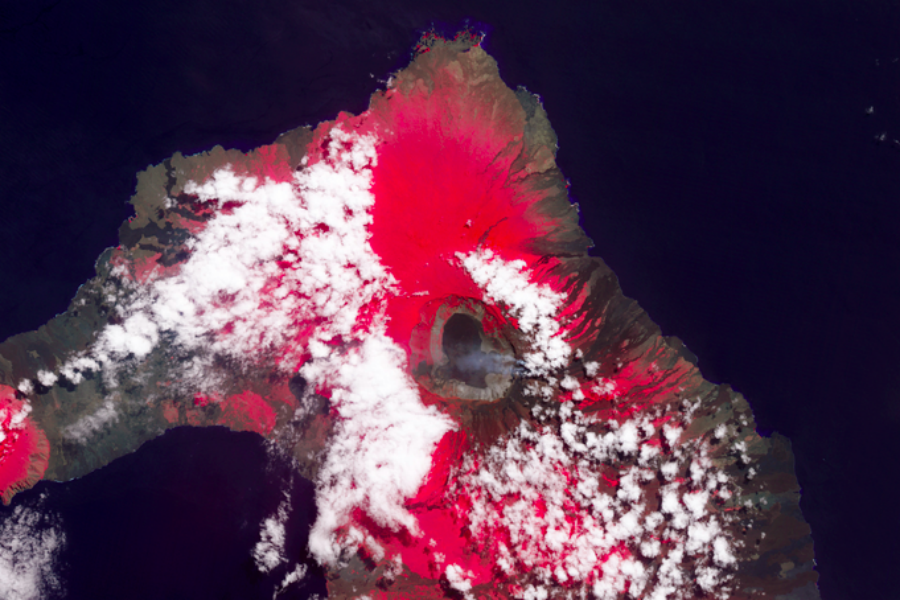What happens when a volcano erupts in the Galápagos?
A satellite photo released by NASA on Tuesday shows the dramatic effects of a volcano on Isabela Island, the largest of the Galápagos Islands, that erupted in late May and has remained active.
The eruption, the first for Wolf volcano in 33 years, threatened the safety of a rare species of pink iguanas, which are only found on Isabela Island, as well as populations of indigenous giant tortoises and yellow iguanas, researchers said. But all the animals of the island were safe, as the ash and lava flowed east and southeast, eventually spilling into the sea, while wildlife live mostly to the north and west of the volcano’s summit.
Wolf is the highest of the islands’ volcanoes, rising 5,609 feet above sea level. The recent eruption sent volcanic gases and ash roughly 50,000 feet into the sky, while lava flowed through a fissure, down eastern and southeastern slopes, and eventually reached the sea, paving over formations from the last eruption in 1982, according to NASA.
In early June, the lava flows on the gentle slopes of the volcano appeared to subside, according researchers, but seismologists from Ecuador’s Instituto Geofisico-Escuela Politécnica Nacional (IG) detected increased activity inside the caldera – the basin at a volcano’s summit – near the southern rim, and they are continuing to closely monitor activity. The 4-mile wide caldera atop Wolf is nearly 700 meters deep.
The image of Wolf volcano was taken by the Advanced Spaceborne Thermal Emission and Reflection Radiometer (ASTER) on NASA’s Terra satellite.
ASTER is one of five sensors on the satellite, and is used primarily to monitor volcanic activity and changes to Earth’s land masses due to climate shifts and changes in ecosystem dynamics.
"Terra," named for our planet, was launched in 1999 to collect data about Earth's changing climate. The satellite carries five sensors that study the Earth's atmosphere, lands, oceans, and radiant energy.
The eruption at Wolf volcano came just a few weeks after multiple volcanic eruptions occurred at Calbuco volcano in Chile, forcing more than 6,500 people to evacuate. Both volcanoes are along the so-called Ring of Fire on the Pacific Rim, which is known for seismic activity.






